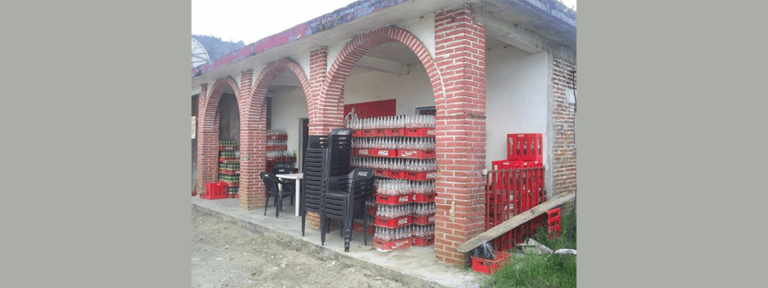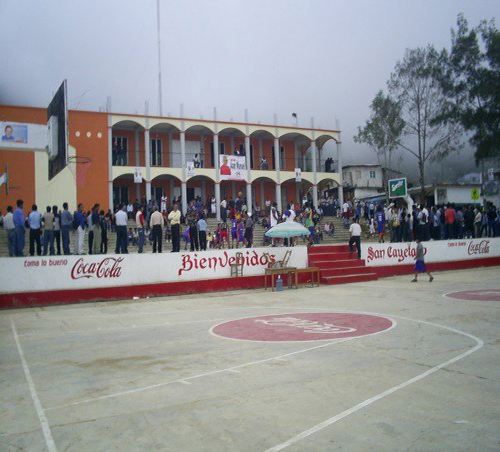
“American film was one of the first main methods of export for Coca-Cola.”
Dr. Laura Mebert, Professor of Liberal Studies at Kettering University, was recently featured on the BBC World Service’s show “The Inquiry” to discuss her research on the role of Coca-Cola in communities in Mexico.
Mebert graduated from Flint Central High School in 2001 before studying Anthropology at Albion College. From there she completed her master’s degree in social anthropology at CIESAS-Sureste in Mexico where she studied the Corporate Social Responsibility activities of Coca-Cola in Mexico. Mebert then received her doctorate at the University of Manchester in the United Kingdom.
One thing that she observed in her research was how omnipresent Coca-Cola’s marketing materials are in many parts of the country.

Chiapas, during their 2007 annual "fiesta de pueblo" (town fair),
which each town holds on the day of the its patron saint. In this
part of the country, every rural town has a basketball court in the
center, flanked by a gazebo and the municipal government hall. In
these towns, it's not unusual for the backboards and (sometimes)
center circle of the basketball court to be painted with Coke or
Sprite logos. Credit: Dr. Laura Mebert
“[In one town in particular], the entire pavilion … in its central square plus the square itself, plus the town hall, were all painted with Coca-Cola logos. So it looked like a completely Coca-Cola sponsored town,” said Mebert, to the BBC. “That was quite breathtaking. It was a stark example of how far they’ve come to dominate the landscape.”
The feature on the BBC focused on the growth of sugar consumption in Mexico through the lens of Coca-Cola. Mebert described Coca-Coal as “essentially sweet brown fizzy water” that relies heavily on marketing efforts to encourage consumption.
“American film was one of the first main methods of export for Coca-Cola,” said Mebert, to the BBC. “It was one of the first products to be widely used as product placement.”
Additionally, Mebert outlines how in the 1950s and 1960s, Coca-Cola identified the most politically and economically powerful individuals in rural areas and offered them a monopoly to distribute products in their communities.
“By forming those kinds of relationships, Coca-Cola would have political and economic inroads in those areas,” said Mebert, to the BBC.
Additionally, Coca-Cola has corporate responsibility programs that support businesses and help communities build schools in exchange for product placement in these institutions.